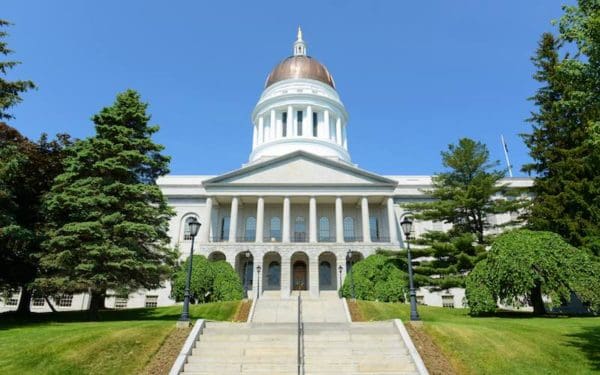
Renewable energy like wind and solar is getting cheaper here in New England. Photo Credit: IStock Eyematrix
In spite of its critics, clean, renewable energy continues to come down in price and become better able to handle the demands of our electricity grid. Concerns around renewables have always centered around them being too expensive and not “dispatchable.” (The sun isn’t always shining and the wind doesn’t always blow, so people think that renewable energy can’t be turned on and off like a fossil-fuel power plant.) But as I’ve written about before, neither of these criticisms are true.
Years ago, the ISO (the nonprofit entity that runs the New England electricity grid) made wind and run-of-river hydro power dispatchable in its real-time energy market. This means certain clean, renewable energy is on equal footing with other sources of energy like gas, coal, and nuclear.
This program has been highly successful in the years since. The ISO has also shown multiple ways that renewables are saving money for New England families and businesses today. In fact, there are very specific ways in which making renewables work on demand saves us all money.
Since I wrote about these exciting developments, there has been additional progress on multiple fronts.
More Renewable Energy Sources Are Dispatchable
Five years ago, when the ISO first moved to make some renewables dispatchable, I wrote about how unhappy this was making the owners of fossil fuel power plants. They were unhappy because they knew having renewable energy on equal footing with fossil fuels would make their old, dirty power plants less economically viable (which it did).
Today, the ISO is expanding the types of renewable energy that are dispatchable in the real-time energy market to include solar. Unsurprisingly, as we work with the ISO to make solar dispatchable, we are hearing the same alarm from the same fossil fuel generators that we heard five years ago. They don’t want to lose their profits to clean, renewable energy.
Fortunately, this is not slowing down the ISO. And, just as the fossil fuel generators predicted five years ago that making renewables dispatchable would undermine the economic viability of their dirty old plants, they are right to fear that today as well. So as the ISO makes more and more renewable energy technologies dispatchable, we are speeding up the day when the last fossil fuel plant in New England will shut down.
Renewable Energy Is Getting Cheaper
Today, buying conventional electricity in Rhode Island from National Grid, the state’s electricity utility, costs residential customers 9.4¢ per kilowatt hour. (For context, a hypothetical “average household” uses 500 to 700 kilowatt hours of electricity a month.) But the Deepwater Wind contract with National Grid for 400 megawatts of offshore wind will only cost only 7¢ per kilowatt hour.
CLF supported the Deepwater Wind contract primarily because it will lower carbon emissions in this age of climate emergency. At the same time, it will save families and businesses tens of millions of dollars (which is why the contract also gained the support of Rhode Island’s governmental ratepayer advocate). This was a classic win-win: lower climate-damaging emissions, greater environmental benefits for the state and the world, and financial savings for everyone except fossil fuel giants!
And, Vineyard Wind’s new 800-megawatt offshore wind project being developed in Massachusetts will be even less expensive – only 6.5¢ per kilowatt hour.
So, the next time you hear someone say that renewable energy is too expensive, you can say that the Deepwater Wind offshore wind contract will cost ratepayers 25% less than conventional power, and the Vineyard Wind project will be 31% lower. So much for renewables being too expensive!




